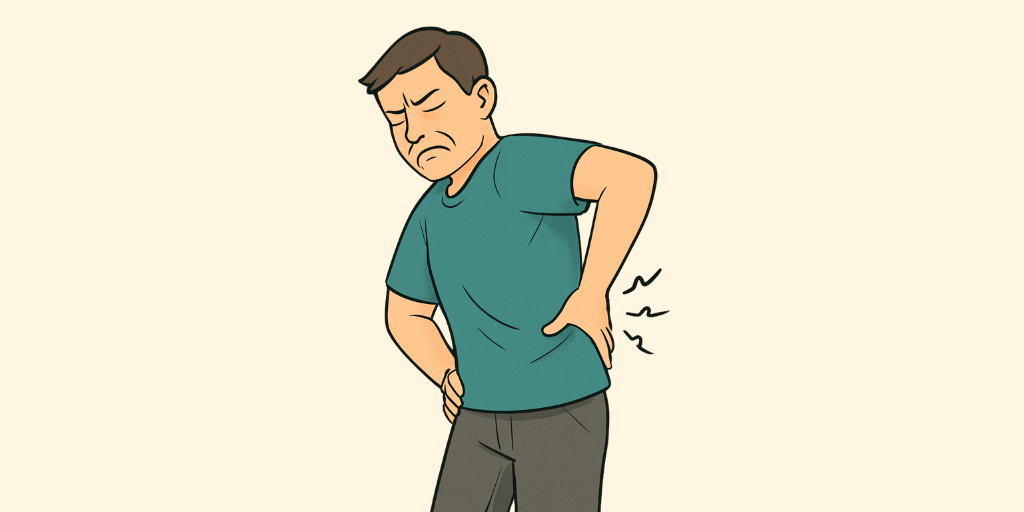Ayurvedic Name: Katigrah
Description:
Katigraha refers to lower back pain or lumbar stiffness resulting from aggravated Vata and Kapha. It manifests as dull or sharp pain, restricted movement, and discomfort in the lumbar region, often due to poor posture, excessive strain, or degenerative changes in the spine. Ayurvedic treatment includes Kati Basti, Abhyanga, Swedana, Panchakarma therapies, and herbal remedies like Guggulu, Dashmoola, and Shallaki to strengthen the lower back and relieve stiffness.
Signs & Symptoms:
- Prishtashoola (Lumbar Stiffness): Pain and stiffness in the lower back, often affecting movement and posture.
- Rukshata (Dryness): Dryness in the lumbar muscles due to overuse or immobility.
- Stambha (Stiffness): Inability to bend or move the lower back freely, leading to restricted movement.
- Vishama Agni (Irregular Digestion): Bloating or constipation related to poor posture or lumbar stress.
- Shwasa (Breathlessness): Shortness of breath, particularly if the stiffness affects the diaphragm.
- Gaurava (Heaviness): A sensation of heaviness in the lower back, often worse after prolonged sitting or standing.
Diagnosis:
Physical Exam and Lumbar Spine X-ray
Risk Factors:
- Dietary Factors
Excessive Salt and Sugar: Diets high in salt and sugar can contribute to inflammation and poor circulation, which can exacerbate stiffness in the lumbar spine.
Insufficient Hydration: Dehydration can affect the elasticity of spinal discs, leading to increased stiffness and discomfort in the lower back. - Lifestyle Factors
Sedentary Lifestyle: Lack of physical activity and prolonged sitting can lead to muscle weakness and stiffness in the lumbar region.
Improper Lifting Techniques: Lifting heavy objects incorrectly can strain the lower back muscles and lead to stiffness and discomfort. - Medical Conditions
Degenerative Disc Disease: The breakdown of intervertebral discs in the lower back can cause stiffness, pain, and reduced mobility.
Spinal Stenosis: Narrowing of the spinal canal due to degenerative changes can compress the nerves, causing stiffness and pain in the lumbar region.
Complications:
- Chronic Back Pain (Prishtashoola): Persistent stiffness in the lower back causes ongoing discomfort and pain.
- Impaired Movement (Chalana Vikruti): Difficulty bending, lifting, or twisting due to stiffness and pain in the lower back.
- Muscle Atrophy (Vishalyaka): Chronic stiffness leads to weakening of the back muscles, increasing the risk of further injury.
- Sciatica-like Symptoms (Prishtava Vata): Compression or irritation of nerves due to lumbar stiffness can lead to radiating pain down the legs, similar to sciatica.
- Reduced Flexibility (Chalana Kshaya): Long-term stiffness results in reduced flexibility, limiting the range of motion in the lower back.
Epidemeology:
More common in individuals aged 40-65, especially those with sedentary lifestyles, obesity, or a history of back injuries.
Approximately 60-80% of people will experience low back pain at some point in their lives, with lumbar stiffness being a common symptom.
Higher prevalence in individuals who engage in heavy lifting, poor posture, or those working long hours in desk jobs.

